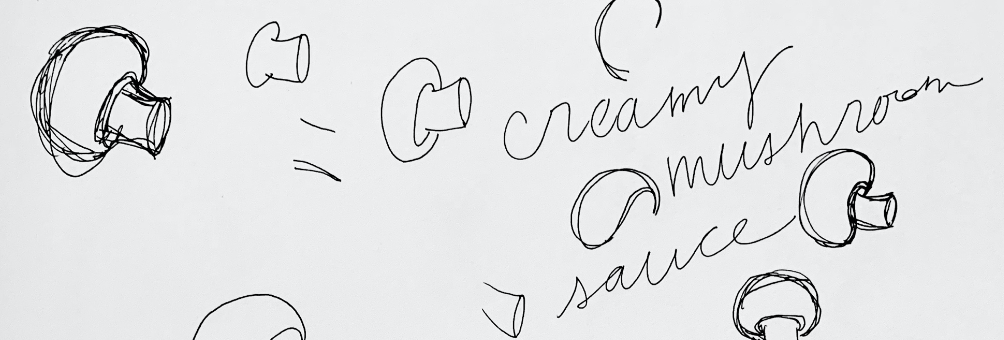substitutions: creamy mushroom sauce
BY TAVIS GRAY
April 2019
Keep this in mind: carbon sequestration. Hold it there, bring it to a simmer, then reduce heat. I mean that. Reduce heat.
How familiar should one be with carbon storage? That depends on how badly one wishes to survive the next century on planet Earth. Carbon emissions reached an all-time high in 2018, and if we (humans) don’t change our (human) ways fast, we (again, humans) need to start thinking about which Beyoncé albums to launch into space so searching alien races may one day define our brief space/time here as worthwhile. The answer is, of course, all Beyoncé albums.
What’s a bunch of moron homo sapiens to do? Well, legislate. But beyond deals new and green there may be fungi. Often ignored below hiking feet or tossed to the side of market salads, fungi already account for between 5 and 20% of current carbon sequestration. Scientists think they could potentially contribute a lot more. Nature’s recyclers can eat just about anything—from nerve gas to plastic to our excess C02. One square meter of healthy soil can contain as much as 12,000 miles of fungi filament. Among them, Mycorrhizal fungi, which grow symbiotically in the root systems of all living plants, may hold more than a few answers to our carbon problem. Particularly adept, mycorrhizal fungi work alongside the photosynthesis process wherein plants absorb carbon from the atmosphere, hold it in their beautiful plant bodies til death, and then release that absorbed carbon back into the soil once parted. This is where these massive fungi networks come in. They store that released carbon before it can be absorbed again into the atmosphere. These mycorrhizal fungi networks are more than cute cogs—they’re carbon security boxes. They’re potential planet savers.
Beyond delaying atmospheric re-uptake, carbon retained via fungal sequestration in soil can help with water retention in arid landscapes. That means more farmland—farmland we desperately need due to the food scarcity crisis brought on by the effects of climate change. We’re talking REFORMED AGRICULTURE, baby! Mushrooms need not be psychedelic to perform magic. And they need not be kept under wraps to be the secret to a great sauce.
Toss one clove chopped garlic into a splash of olive oil in a preheated saucepan. As the garlic begins to fry, pour ⅔ cup red wine along with ⅓ cup cashew milk into the pan, stirring gently to combine. Bring to a feverish simmer. Add one handful of chopped white or crimini mushrooms. Reduce heat and do not touch again until sauce is ready to sauce. Let the shrooms work. They can handle the responsibility.
Substitutions is a monthly column dedicated to the ways and means of living a more plant-based life. Recipe cards upon request!
Illustrations by Sarah Caroline




